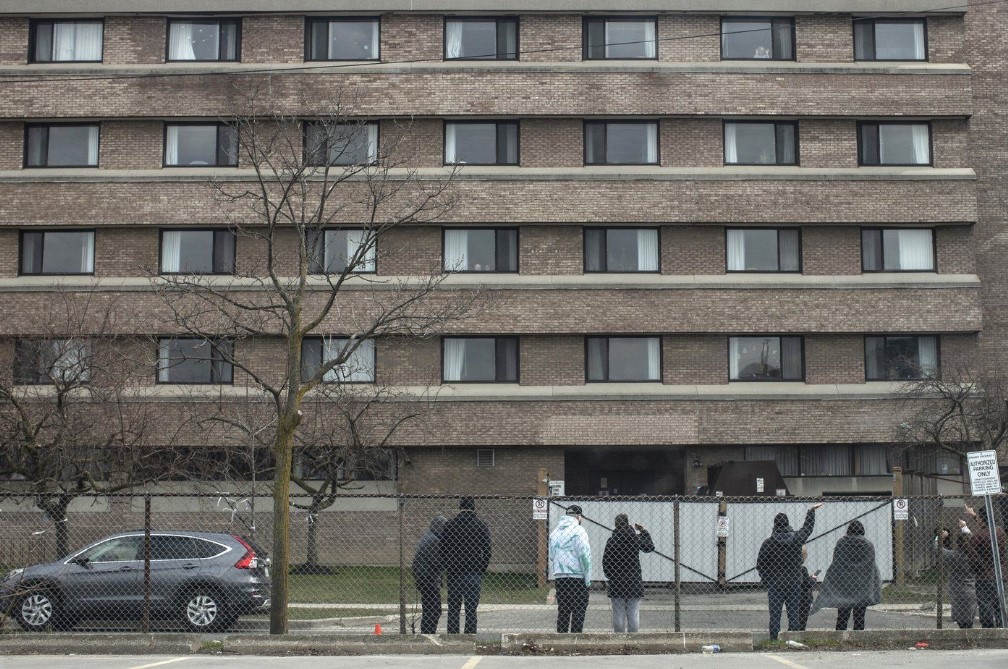Toronto hospitals encouraged by early stages of virtual ER programs

Posted January 7, 2021 4:55 pm.
Three Toronto hospitals say they’ve had early success with their virtual emergency departments and hope that the service introduced during the COVID-19 pandemic is here to stay.
Two hospitals — Sunnybrook Health Sciences Centre and St. Michael’s Hospital — launched their six-month pilot projects last month, while Humber River Hospital launched its virtual ER last week.
Dr. Justin Hall, an emergency physician at Sunnybrook Health Sciences Centre and head of the virtual emergency department, said they have seen about 250 patients since Dec. 1.
“It’s going really well,” Hall said.
“We have seen a wide variety of complaints or concerns that patients come in with, anywhere from simple skin infections or urinary infections to minor sprains and strains, after a fall for example, to medication questions, counselling and mental health concerns and all across the age spectrum.”
Many patients have not had to come into the physical hospital, he said, while others have been directed to specialists after the initial call, helping speed up in-person visits and save time for patients.
Hall said patients’ fears of contracting the virus in hospital was one of the reasons for launching the virtual care departments.
“What we were seeing during wave one is a lot of patients were not coming to the emergency department or delaying their care even if they needed timely care,” he said.
Humber River Hospital has 20 30-minute spots available between 5 p.m. and 10 p.m. with plans to operate seven days a week, said Jane Casey, a registered nurse and director of the emergency department.
“We heard from our patients and their families that they want virtual,” Casey said.
All three hospital virtual emergency rooms run in similar ways. Patients need to have an Ontario health card and have access to a digital device with an internet connection.
Links to the programs are on each hospital’s web pages where patients can fill out online forms.
Appointment times correspond to each hospital emergency room’s busiest times, usually between afternoon and evening.
St. Michael’s and Sunnybrook offer appointments between 2 p.m. and 9 p.m. with signups beginning at 10 a.m. for St. Michael’s and noon for Sunnbyrook. Early evenings are on high demand partially because family doctors and walk-in clinics have closed.
From there it differs depending on the hospital.
At Humber River, patients must download Microsoft Teams and they’ll first see a triage nurse, just like the real-life emergency department. That will then send a message to a clerk who will follow up directly with the patient on the phone and act as IT support to guide them through the technical parts of the virtual visit.
“They are seeing a very experienced triage nurse … and then they’ll likely see a physician,” Casey said.
“The other really nice thing is we’re able to refer them to all the services, clinics, etc. in the emerge in the hospital. So, we utilize all the supports that are available for patients.”
At Sunnybrook, patients will get an automated text message or email about their appointment.
“And then they just need to be able to click on a link for Zoom _ we provide instructions of how to do that _ but it’s simply a one click connection,” Hall said.
At the appointment they’ll then see an emergency department physician.
At St. Michael’s a clerical worker will ask the patient what type of platform to use _ video is preferred, but doctors will also call on the phone _ and get the patient up and running online for their appointment, said Dr. Shaun Mehta, an emergency physician and the co-lead on the virtual program.
The appointment lasts anywhere from 10 to 20 minutes and then there are a variety of outcomes for the patient, he said. For some it might be filling a prescription, which can be done remotely, or scheduling an appointment with a specialist.
“You may be asked to come directly into the hospital, and what our physician does is we communicate to the physician on duty physically in the hospital about you,” Mehta said.
“So everything once you get to the hospital happens a little bit smoother, hopefully.”
St. Michael’s has a somewhat unique population who use the emergency department that includes the homeless and those who live in shelters, Mehta said.
The biggest barrier to using the service is having a device and access to the internet, which many of their ER patients do not have, he said.
“What we’re looking at doing is donating IT infrastructure _ monitors, webcams, microphones, etc. to shelters,” Mehta said.
“We’re really trying to go out and reach them where they are with this virtual service. A lot of times they just end up coming to emergency, sometimes for issues that could have been dealt with remotely.”
The programs are all funded by the Ministry of Health, the hospitals said.








